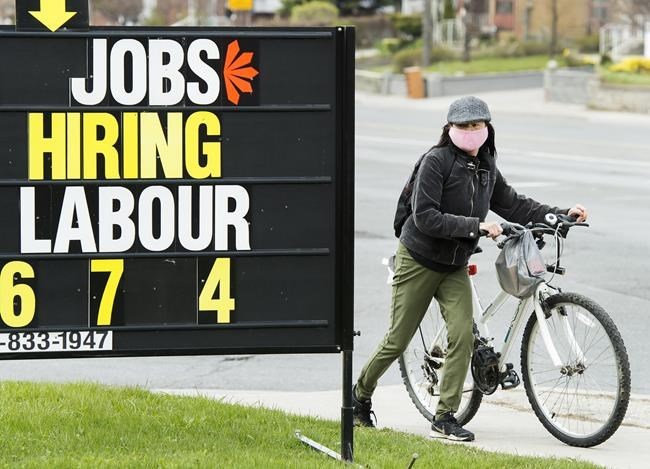OTTAWA — saąúĽĘ´«Ă˝'s unemployment rate is still holding near historical lows even as the Bank of saąúĽĘ´«Ă˝ cranks up interest rates to slow the economy and stifle inflation. Â
Statistics saąúĽĘ´«Ă˝ says employment was little changed in November, with a modest gain of 10,000 jobs.
In its latest labour force survey, the federal agency says saąúĽĘ´«Ă˝'s unemployment was 5.1 per cent last month, down from 5.2 per cent in October.
"The main overriding feature of today's report was that you were continuing to gain jobs in saąúĽĘ´«Ă˝," TD's director of economics James Orlando said Friday.Â
"If you add up just the number of jobs gained [in] November and October, it's pretty substantial."
In October, the economy added a whopping 108,000 jobs, taking forecasters by surprise with the strong jobs gain.Â
Employment rose in several industries in November, including finance, insurance, real estate, rental and leasing, manufacturing and in information, culture and recreation, while it fell in construction as well as wholesale and retail trade.
Statistics saąúĽĘ´«Ă˝ also noted in its report that the employment rate among core-aged women aged 25 to 54 hit 81.6 per cent in November, a record high in comparable data going back to 1976.
saąúĽĘ´«Ă˝â€™s labour market has remained remarkably strong despite signs of an economic slowdown. The unemployment rate fell to a record-low of 4.9 per cent in the summer and has edged up only slightly since then.
"The economy is clearly still doing very well. When you look at the labour market, you have not seen a slowdown," Orlando said.Â
Centre for Future Work director Jim Stanford noted saąúĽĘ´«Ă˝'s unemployment rate is quite low by historical standards. At the same time, he said, it's difficult to gauge where the labour market is headed.Â
"We had several months of very weak reports through the summer and early autumn, then we had a gangbusters report in October. And now we're kind of back to a treading water kind of report," he said.Â
Wages have continued to growth in October, though at a rate that lags inflation.Â
In November, wages were up 5.6 per cent compared to a year ago, marking the sixth consecutive month of above 5.0 per cent growth. Â In October, the annual inflation rate was 6.9 per cent.
Bank of saąúĽĘ´«Ă˝ governor Tiff Macklem has characterized saąúĽĘ´«Ă˝â€™s low unemployment rate as unsustainable and said it’s contributing to high inflation.
"If you think the unemployment rate was already too low, then today's number is bad news." Stanford said.Â
The central bank is hoping to see the labour market ease in response to its aggressive interest rate hikes this year.
Recent research from the Bank of saąúĽĘ´«Ă˝ suggests it believes it can bring inflation down without causing a large increase in unemployment.
Stanford is critical of the Bank of saąúĽĘ´«Ă˝'s assertion that a tight labour market is to blame for inflation given real wages have fallen.Â
"It's, I think, mathematically impossible to say that wages are the source of inflation," he said.Â
The central bank began raising interest rates in March, when it delivered the first of six consecutive rate hikes, and is expected to deliver another interest rate increase next week.
As the Bank of saąúĽĘ´«Ă˝ nears the end of the rate hiking cycle, markets will be watching out for any indication next week on whether to expect another rate hike in January.
Orlando said job report Friday supports the forecast of a half-percentage point rate hike next week, with the door open to another rate hike in January.Â
"I don't think by January you're going to have enough data to convince you that the economy has turned enough," he said.Â
"So you probably will likely see the policy rate getting into about 4.5 per cent [in] early 2023."
This report by The Canadian Press was first published Dec. 2, 2022.
Nojoud Al Mallees, The Canadian Press



